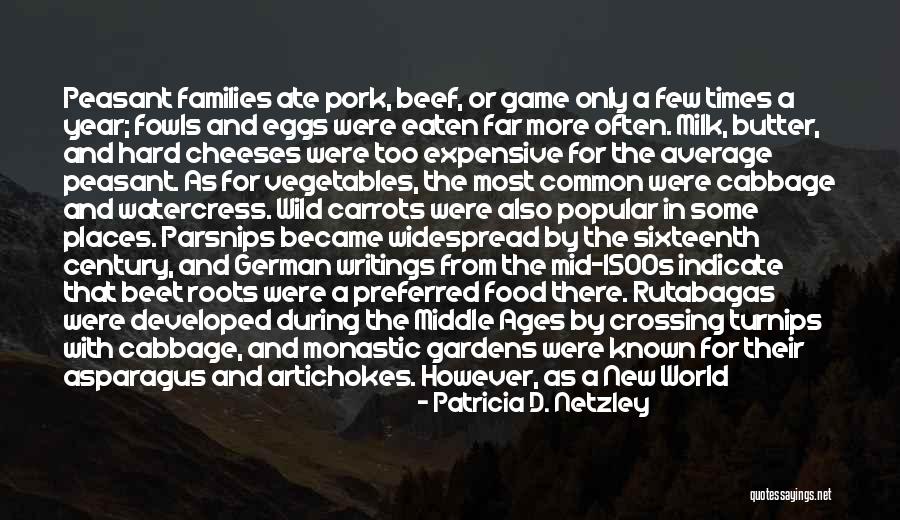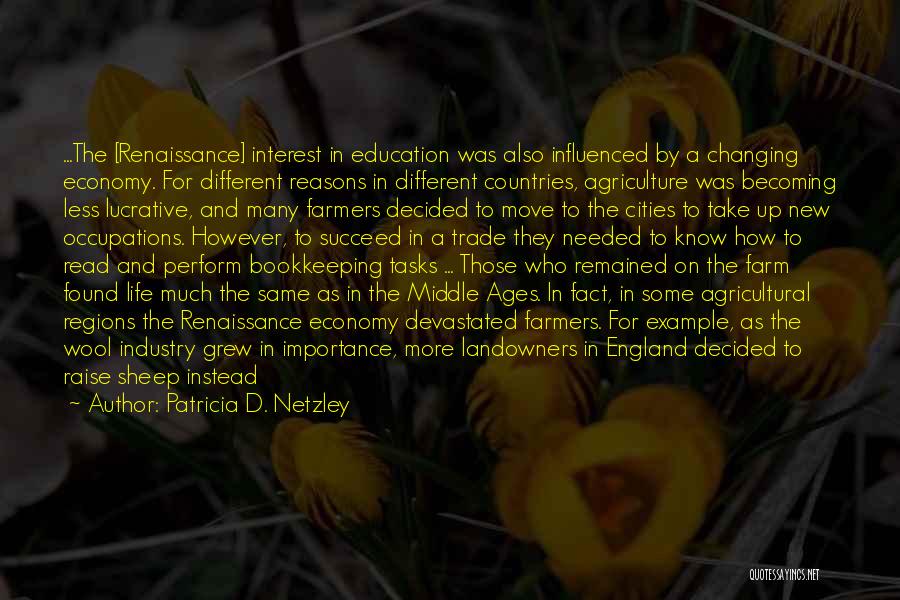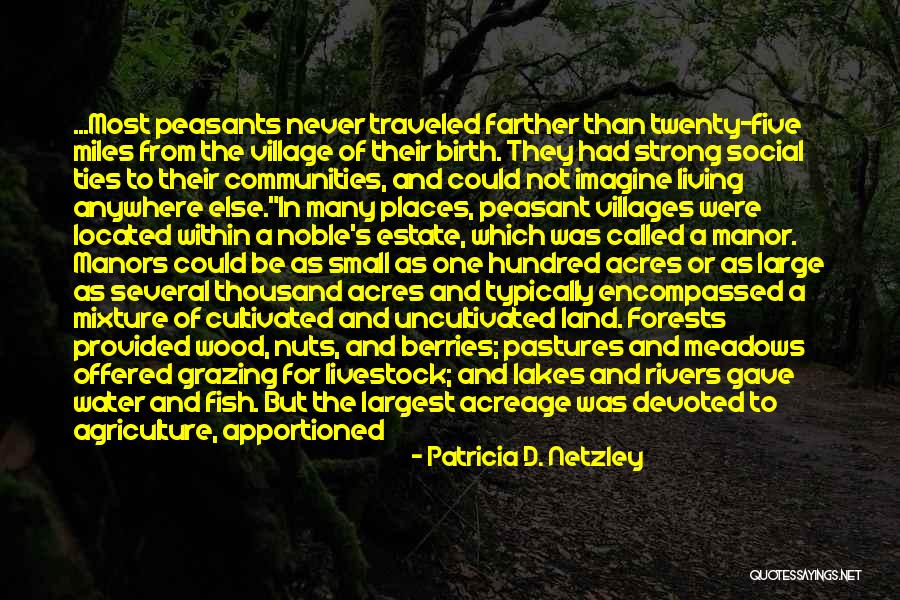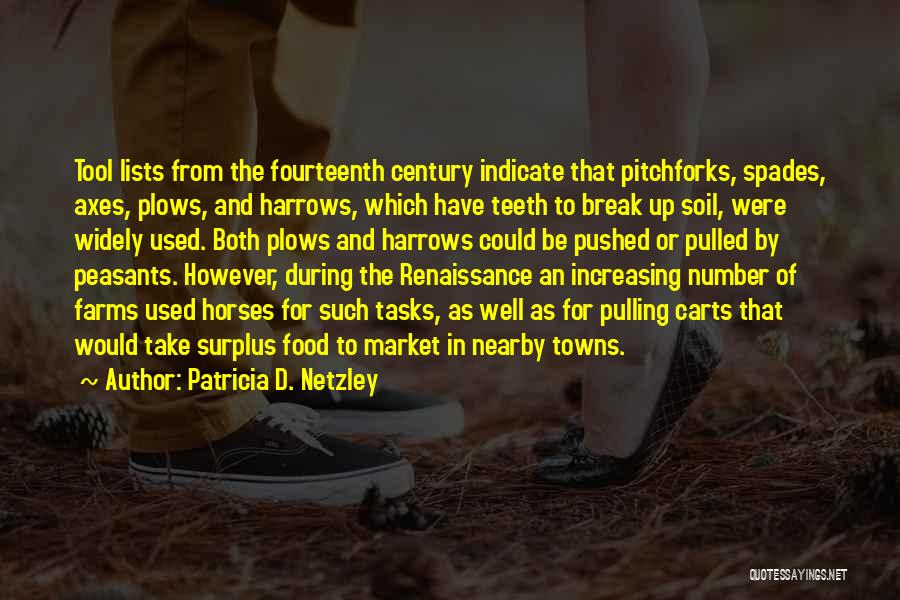Patricia D. Netzley Quotes & Sayings
Enjoy the top 4 famous quotes, sayings and quotations by Patricia D. Netzley.
Famous Quotes By Patricia D. Netzley

Peasant families ate pork, beef, or game only a few times a year; fowls and eggs were eaten far more often. Milk, butter, and hard cheeses were too expensive for the average peasant. As for vegetables, the most common were cabbage and watercress. Wild carrots were also popular in some places. Parsnips became widespread by the sixteenth century, and German writings from the mid-1500s indicate that beet roots were a preferred food there. Rutabagas were developed during the Middle Ages by crossing turnips with cabbage, and monastic gardens were known for their asparagus and artichokes. However, as a New World vegetable, the potato was not introduced into Europe until the late 1500s or early 1600s, and for a long time it was thought to be merely a decorative plant.
"Most people ate only two meals a day. In most places, water was not the normal beverage. In Italy and France people drank wine, in Germany and England ale or beer. — Patricia D. Netzley

...The [Renaissance] interest in education was also influenced by a changing economy. For different reasons in different countries, agriculture was becoming less lucrative, and many farmers decided to move to the cities to take up new occupations. However, to succeed in a trade they needed to know how to read and perform bookkeeping tasks ... Those who remained on the farm found life much the same as in the Middle Ages. In fact, in some agricultural regions the Renaissance economy devastated farmers. For example, as the wool industry grew in importance, more landowners in England decided to raise sheep instead of growing crops. They therefore needed fewer farmworkers, and many peasants lost their livelihoods. — Patricia D. Netzley

...Most peasants never traveled farther than twenty-five miles from the village of their birth. They had strong social ties to their communities, and could not imagine living anywhere else.
"In many places, peasant villages were located within a noble's estate, which was called a manor. Manors could be as small as one hundred acres or as large as several thousand acres and typically encompassed a mixture of cultivated and uncultivated land. Forests provided wood, nuts, and berries; pastures and meadows offered grazing for livestock; and lakes and rivers gave water and fish. But the largest acreage was devoted to agriculture, apportioned among the peasants and the noble, although the noble did no farming himself. Instead the peasants collectively worked both his land and theirs. — Patricia D. Netzley

Tool lists from the fourteenth century indicate that pitchforks, spades, axes, plows, and harrows, which have teeth to break up soil, were widely used. Both plows and harrows could be pushed or pulled by peasants. However, during the Renaissance an increasing number of farms used horses for such tasks, as well as for pulling carts that would take surplus food to market in nearby towns. — Patricia D. Netzley





